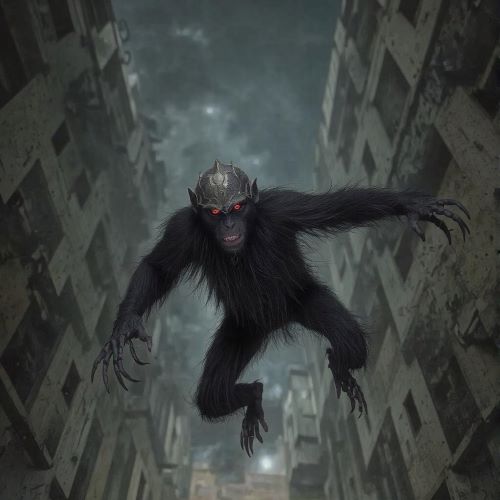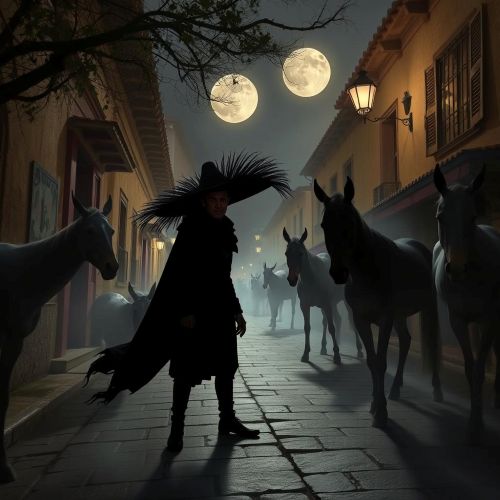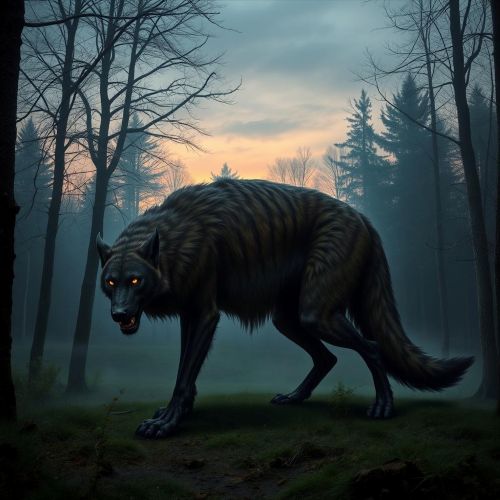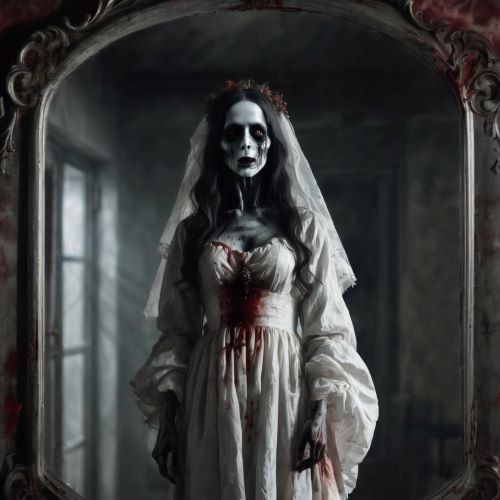Hat Man : The Silent Terror
| Description | |
|---|---|
| Origin | Global |
| Classification | Humanoid |
| Demeanour | Evil |
| Habitat | Rooms, Houses |
| Status | Not Proved |
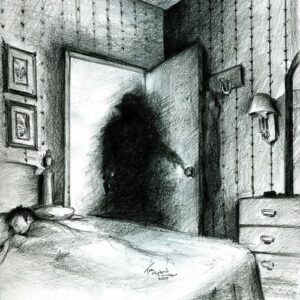
Introduction
The Hat Man is a shadowy figure that has unsettled people worldwide, appearing in bedrooms or lurking in dark corners as they drift between sleep and wakefulness. Typically described as a tall silhouette in a wide-brimmed hat and sometimes a trench coat, he lacks distinct facial features, making his presence even more eerie. Unlike traditional ghosts, he resembles a living shadow, often linked to sleep paralysis, nightmares, or altered states of consciousness.
What makes the Hat Man especially intriguing is the consistency of sightings across different cultures. Whether a paranormal entity, a psychological phenomenon, or a mass hallucination, his legend has only grown in recent years, fueled by chilling testimonies, paranormal research, and media portrayals.
Physical Attributes
The Hat Man stands out from other shadow entities due to his distinct appearance and unsettling presence. Witnesses consistently describe him as an abnormally tall figure, typically between 6 to 8 feet, with a solid, well-defined silhouette rather than a misty or translucent form. His most recognizable feature is his wide-brimmed hat, which varies in style from a fedora to a top hat. He is also frequently seen wearing a long coat or cloak, adding to his ominous demeanor.
While many accounts depict his face as entirely featureless, some report glowing red or yellow eyes peering from the darkness. His presence is often linked to an overwhelming sense of fear or dread, as though he radiates a malevolent energy. Unlike typical ghosts, the Hat Man appears more like a living shadow, sometimes flickering or fading, as if caught between dimensions. These eerie characteristics have cemented his place as one of the most chilling figures in urban folklore.
First Sighting/Reporting
The origins of the Hat Man legend remain elusive, much like the figure himself. While shadowy entities have been described for centuries, the Hat Man emerged as a distinct presence in the late 20th century. Reports of encounters began surfacing more frequently in the 1990s and early 2000s, fueled by online forums, paranormal documentaries, and books like The Hat Man: The True Story of Evil Encounters by Heidi Hollis, which linked him to sleep paralysis and supernatural phenomena.
What makes the Hat Man particularly eerie is the consistency of reports across different cultures, from North America and Europe to Asia and Africa. Despite geographical and cultural differences, witnesses often describe nearly identical experiences, leading some to speculate that he embodies a universal fear or archetype. More recently, he has even been referenced in internet culture as the “Benadryl Hat Man,” a hallucinatory figure reportedly seen by those experiencing extreme sleep deprivation or medication-induced visions.
Other Names
The Hat Man goes by different names across cultures, each emphasizing a unique aspect of his unsettling presence. Some refer to him simply as a “shadow person,” linking him to the broader phenomenon of dark, humanoid figures observed in folklore and paranormal encounters. In certain Native American traditions, he is called the “Top Hat Man” and is often seen as a harbinger of misfortune or an ominous observer.
Other names highlight specific traits: “The Dark Watcher” emphasizes his silent, looming nature, while “The Phantom Hat Man” suggests a ghostly or supernatural origin. “The Nightmare Hat Man” reflects his frequent appearances during sleep paralysis, reinforcing his reputation as a terrifying figure. Despite these variations, all descriptions share a common thread—he is a menacing presence that watches, waits, and leaves an unforgettable sense of dread.
Modus Operandi
The Hat Man’s presence is often defined by eerie stillness and an overwhelming sense of menace rather than direct interaction. Witnesses frequently describe him as standing in doorways, lurking in the shadows, or appearing at the foot of their bed, watching silently. His unsettling gaze alone is enough to instill deep fear, with many reporting an oppressive atmosphere that lingers even after he vanishes.
Most encounters occur during sleep paralysis, a state where the mind is awake but the body is temporarily paralyzed. Those who experience this phenomenon often find themselves unable to move or speak as the Hat Man looms nearby. Some believe he is drawn to environments filled with fear, stress, or conflict, feeding off negative energy. In rare cases, people claim to have seen him multiple times throughout their lives, as if he selectively follows certain individuals. While he doesn’t typically cause physical harm, the psychological imprint he leaves behind is enough to haunt people long after the encounter ends.
Pop Culture References
The Hat Man has firmly established himself in modern folklore, frequently appearing in horror media and online discussions. His presence can be found in documentaries, movies, books, and video games, further solidifying his eerie reputation.
Television and film have explored the phenomenon through paranormal documentaries and horror stories, with some movies featuring shadowy figures that bear striking similarities to the Hat Man. Books like Heidi Hollis’s The Hat Man: The True Story of Evil Encounters offer in-depth examinations of the entity, while online discussions and creepypasta stories continue to fuel his legend. Video games have also drawn inspiration from the Hat Man, incorporating shadowy figures into their narratives, especially in horror and psychological thriller genres.
His influence extends beyond folklore, seeping into internet culture, where forums, social media, and YouTube channels dissect encounters and theories. Whether as a source of fear, fascination, or even dark humor—like the “Benadryl Hat Man” meme—his presence in pop culture keeps the legend alive, evolving with each retelling.
Current Status
The Hat Man remains a persistent figure in modern folklore, with reports of encounters spanning cultures and generations. His presence is frequently discussed on social media, paranormal forums, and platforms like Reddit and YouTube, where people share eerily similar experiences despite having no prior exposure to the legend. This consistency has led to ongoing debates about his nature—whether he is a product of sleep paralysis, a psychological phenomenon, or something more supernatural.
Scientists have linked sightings to hypnagogic and hypnopompic hallucinations, which occur in the transition between sleep and wakefulness. Others suggest that cultural storytelling and shared fears amplify the phenomenon, turning personal experiences into collective myths. Still, many believe the Hat Man is a genuine entity, feeding on fear and appearing in moments of vulnerability. Regardless of the explanation, his legend endures, a chilling reminder of humanity’s fascination with the unknown.
Source
“The Hat Man Phenomenon,” Paranormal Encyclopedia. Accessed at .
“Sleep Paralysis and Shadow People,” Sleep Research Society. Available at .
Hollis, Heidi. The Hat Man: The True Story of Evil Encounters. AuthorHouse, 2014.
Radford, Benjamin. Scientific Paranormal Investigation: How to Solve Unexplained Mysteries. Rhombus Publishing Company, 2010.
“Hat Man | Monster Wiki | Fandom” date: 2025-01-18
“Who is the Hat Man? ‘Shadow people’ and sleep paralysis – The Week” date: 2025-01-24


